6 science-approved ways to improve any workspace
You don’t have to be an office manager to create an enjoyable and productive workplace for you and your team.
The space you work in matters a great deal. It could be a big skyscraper, a small warehouse, or — if you’re just starting up — even your own garage.
We spend a lot of time (up to 90,000 hours in a lifetime!) at work so naturally we want it to be as productive a space as possible. At Atlassian, we’ve been thinking about workplaces nearly constantly this past year as we’ve been creating our new space in San Francisco.
As the project has moved along, there are a number of things we’ve learned that can be applied to almost any workplace big or small. We haven’t figured it all out, but we hope you can take some of these tips back to your own space, even if you aren’t the office manager.
Connect to nature
Working in an environment with natural scenery, greenery, and light is known to produce healthier employees who take fewer sick days. Even in hospital settings, patients that were exposed to natural elements recovered faster than those who were not.
Especially at a point in history where people spend so much time indoors, this piece of workplace design is vital to health and wellness. A connection to natural elements such as plants, natural light, and window views is an easy improvement to start with.
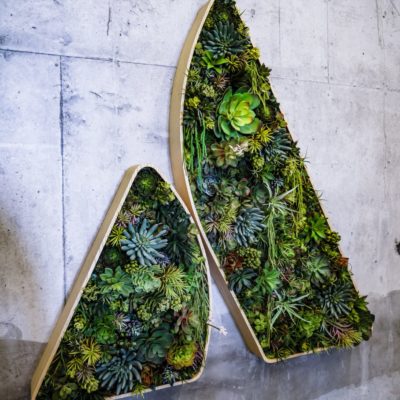
Our Atlassian logo as a living garden scape in our San Francisco office
Quick tip: Add some plants to your office to improve air quality. According to NASA (yes, they did the research) some of the best types of indoor plants to have are Snake Plant, Ferns, and Dwarf Palms.
Promote variety in your workspace
A recent study by design and architectural firm, Gensler, found that when people are able to decide how they work they are happier at their jobs and more productive. Control over “how” you work includes things like being able to configure the height and orientation of your desk or the layout of your office furniture.
No two people are exactly the same, so why would we assume they work in the same way?
Create a variety of spaces tailored to how your team gets work done. For instance, at Atlassian we provide our team with design labs, conference rooms, and public and private spaces in addition to individual desks.
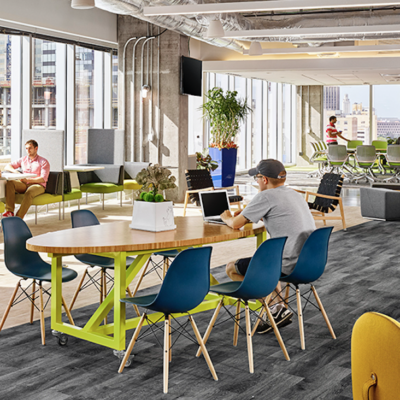
Varied seating in our Austin, Texas office
Quick tip: Change up the way you work! So many of us just set up our desks and never look back. Try facing your desk in a different direction, get an ergonomic chair that can adjust to your preferences, or even add different seating options for impromptu meetings. You may find you’ve always wanted to work differently.
Foster community through shared “we” spaces
Facebook surveys its employees twice a year to determine what they value most. Consistently they have found that their employees highly value community, or the sense of feeling connected to others they work with.
You can encourage community building by giving your team a common space where everyone feels they belong. For a central gathering space you might have a large kitchen, a green space, or even a fitness space. It all depends on your company culture.
Many companies allocate the best views and spaces to the private offices of senior executives, but we prefer a democratic approach.
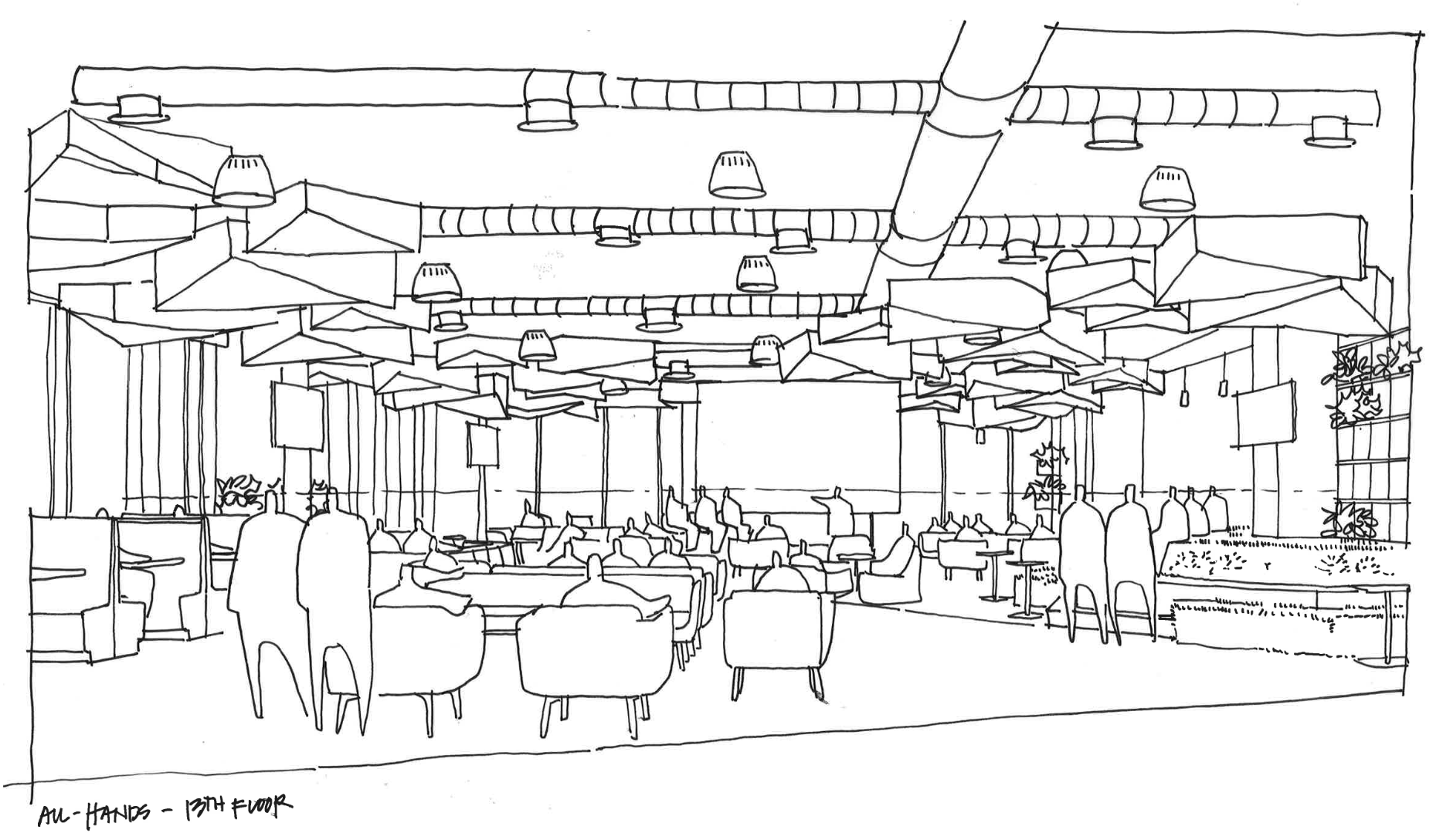
A drawing of our open all hands space in our San Francisco office
But promote focus with “me” spaces
Balancing these “we” spaces with “me” spaces is pivotal. People need a community but they also need solitude. A place to think and to recharge. And I’m not talking about their desk.
Creating spaces of quiet with soft seating and softer lighting (think: floorlamps versus overhead fluorescent lighting) can give your team the time to mentally recharge and focus.
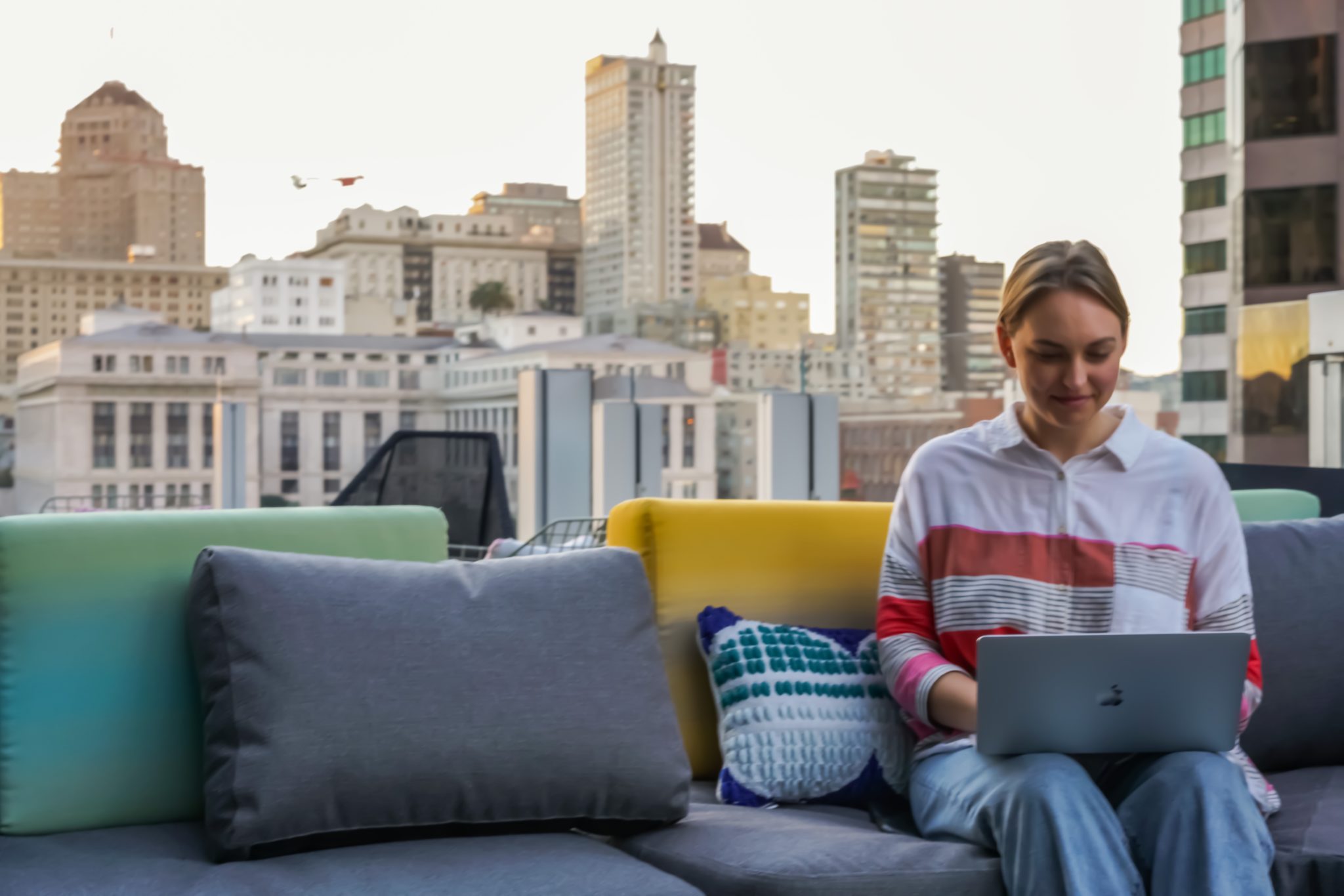
Quick tip: Find a quiet space in your office aside from your desk that you can dedicate to relaxation or focused work. Having a space like that signals to you (and others) that it’s a place for focus and relaxation as opposed to “busy work” and conversation.
Build for belonging
We know from research with students that when people believe they belong, or fit in, to some community, they are more likely to contribute in a meaningful way. They are less likely to hold back their true beliefs and perspectives, because they feel a sense of safety in their environment.
You can build a physical experience of belonging into your workplace by ensuring that your space is comfortable and useful to everyone. For instance, 15% of the world has some sort of visible or invisible disability, according the to UN. This impacts how you’d build things like signage, room layouts and even furniture.

Our accessibility consultant in our San Francisco office space
Quick tip: Look up the ADA guidelines or see what guidelines exist where you live. Once you get familiar with them, try doing an empathy mapping exercise to see what it’s like to be someone with a disability going through your place of work.
Learn from the outside world
What’s your favorite place to work, other than your office? Why do you love it? Was it the lighting, the music, the quiet? Sometimes we go through our work day not knowing why we enjoy certain spaces and not others. We just chalk it up to “atmosphere” but there are actual design principles at play that determine our experience in a certain environment.
We’re pulling inspiration from hospitality, healthcare, and even museums into our new space. All of these different environments have something they do better than traditional office spaces. The only way to find those elements is to keep your eye out for what inspires you. By becoming better at observation, you can find the things you love about your favorite spaces and bring them into your own.
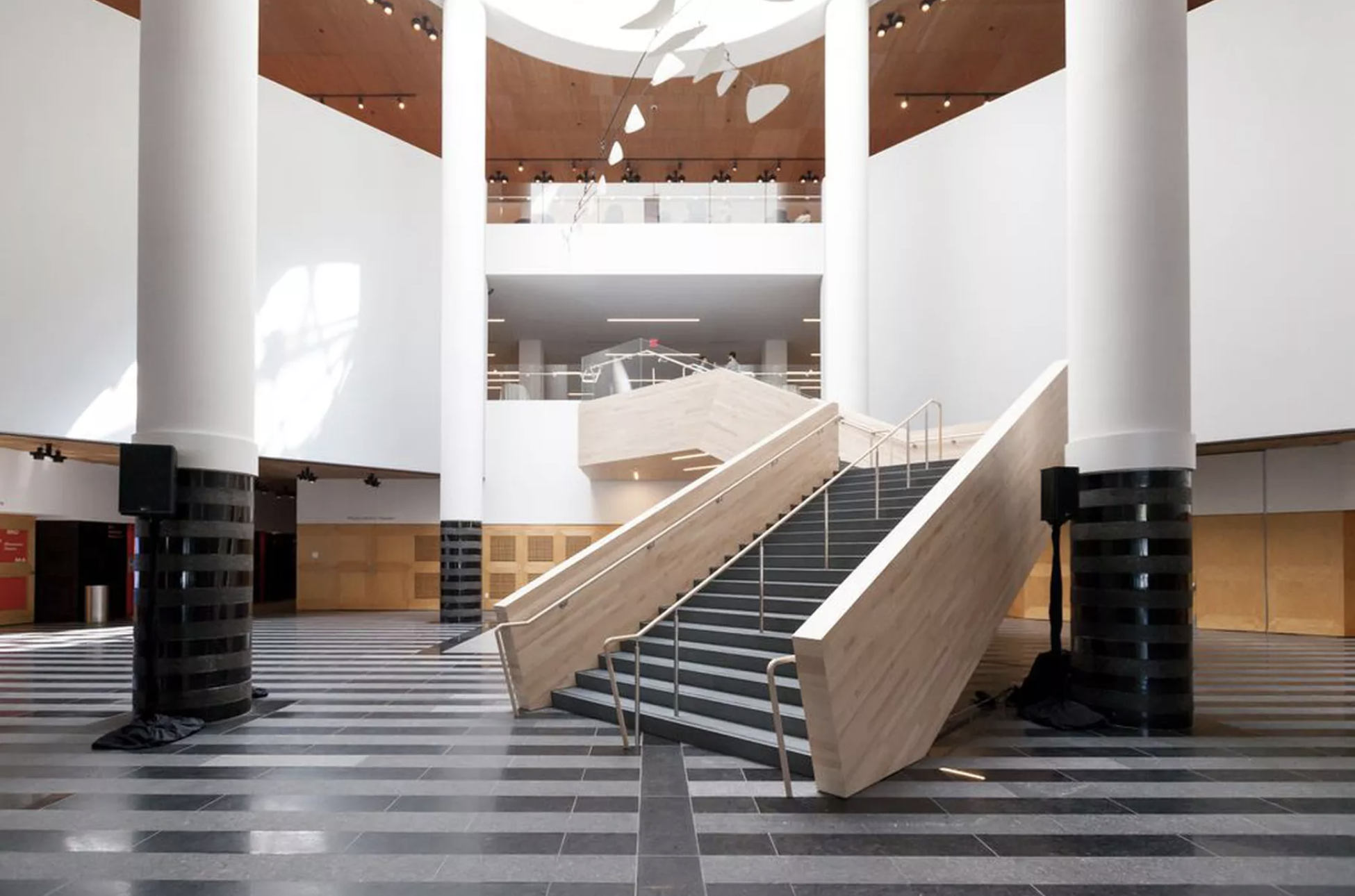
The SF MoMA has a great sense of communal space. Photo by Patricia Chang
Quick tip: Keep your eye out for what inspires you. If you learn to observe your surroundings as opposed to just passing through them, you can find ideas almost anywhere.
The nature of work is always changing and so your workplace has to shift with it. You don’t have to be a workplace experience professional in order to create a great space for yourself and others. Collaborative work doesn’t just happen, it’s thoughtfully designed. Being open to change is a good start, after that you just need to keep moving.
Like what you see here? We’re hiring! Check out our most recent job postings.










































